Fermented Red Bean Paste Recipes with No Added Sugar
Jul 16,2020
Fermented Red Bean Paste Recipes with No Added Sugar
Jul 16,2020


Anko — a sweet bean paste and traditional sweetener — is essential for Japanese confectionery. Although anko has a healthy image because it is made from azuki beans, many people are apprehensive about its high sugar content.
For this reason, attention has recently shifted to sugarless fermented anko, which is made with only azuki beans and koji [a malt-like material produced by growing mold on rice]. The appeal of fermented anko is its gentle sweetness without the use of sugar.
For this article, we spoke about the usefulness and attractions of fermented anko with Kimura Sachiko, a cook, confectionery researcher, and author of Fermented Anko Snacks (Wave Publishing) released in February 2020.
Kimura, author of Fermented Anko Snacks, is a cook and confectionery researcher who runs the popular confectionery school Trois-soeurs and creates custom recipes for restaurants and companies. Kimura says she first discovered fermented anko about a year before she put out her book.

“I’ve been taking to Japanese sweets more and more every year, but I became concerned about the sugar content in the anko bean paste and dough of Japanese sweets. It was like I wanted to eat them, but I couldn’t have them every day. Then I came across fermented anko. Anko is normally made with the addition of a large amount of sugar, but fermented anko is fermented using koji, so it doesn’t contain any sugar. When I tried it, I found it had a gentler sweetness than regular anko and had a nice light taste.”
Kimura is knowledgeable about fermentation, having been involved in editing Begin Your Fermentation Foods Lifestyle with Yogurt (Shufu To Seikatsu Sha), and became interested in how to make fermented anko.
“Fermented anko is made by adapting the method of making amazake [a sweet drink made from fermented rice]. Fermentation using koji converts the starch contained in the beans into glucose, which is what brings out the sweetness. Fujii Hiroshi, the Amazake Explorer, supervised the method of making fermented anko given in my book. You can make fermented anko with a pressure cooker, yogurt maker, or amazake maker. But I recommend using a rice cooker if you are interested in an easy way to make fermented anko.”
Making fermented anko in a rice cooker certainly sounds convenient, but are there any tricks for getting better results?
“Basically, you’ll be fine if you follow the recipe. But be sure to mix well during fermentation to ensure it ferments evenly and brings out the sweetness. Also, the moisture content of the final fermented anko will vary somewhat depending on the rice cooker you use. So if you want to make anko balls or ohagi [mochi wrapped in anko] but the anko is too loose and will not hold together, heat the anko to remove moisture as needed. Just be sure not to heat it above 70C or the koji mold will die off.”

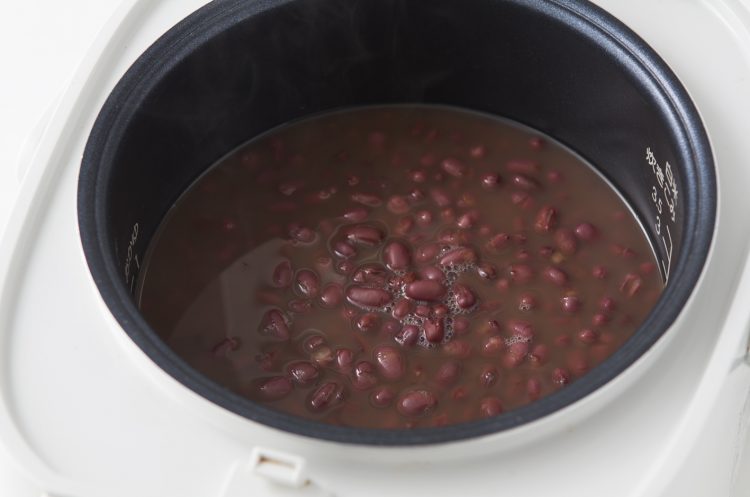
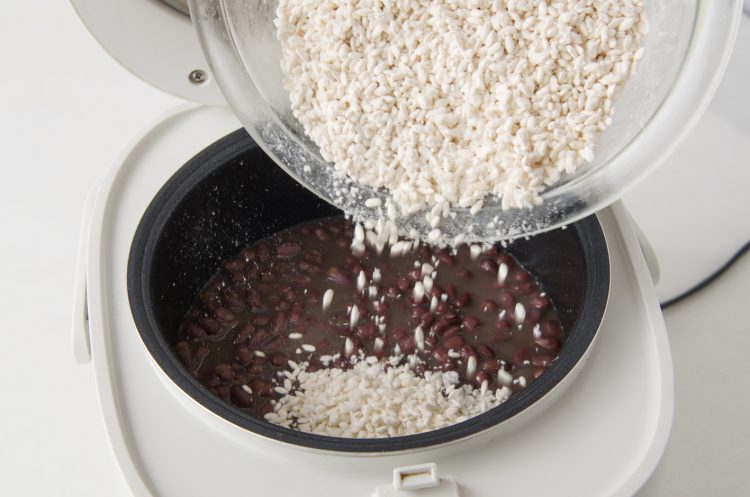
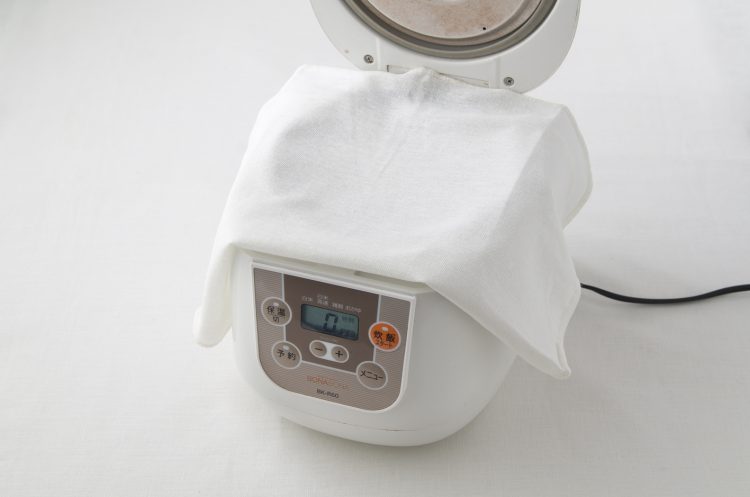
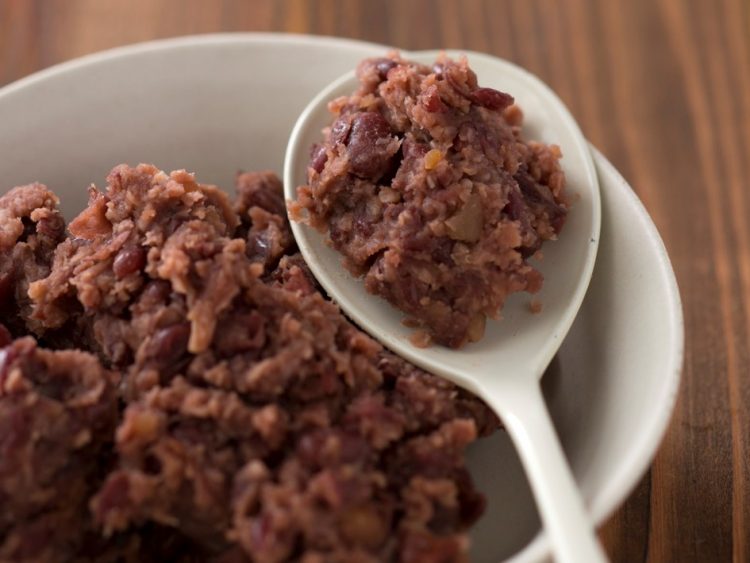
“Many people who are into anko prefer white bean paste. That’s why I developed a fermented anko made with shirohanamame [white runner beans] and chickpeas, which has a flavor similar to white bean paste. On the other hand, if you make fermented anko with azuki beans and lentils, you can enjoy a flavor similar to black bean paste.”
Using four types of fermented anko, Kimura created a total of 63 snack recipes for her book. In addition to classic Japanese sweets such as dorayaki [bean‐jam pancakes] and daifuku [round rice cakes stuffed with anko], Kimura’s book has recipes for cakes, cookies, and pies as well as chilled sweets and drinks like ice cream bars and chai.

Kimura’s book has recipes for banana azuki bars (top), made with soy milk, honey, and banana, and azuki bars (bottom), made with condensed milk and soy milk, both perfect treats on a hot summer day
“What I realized as I was thinking up recipes was fermented anko is only 60 to 70 percent as sweet as regular anko. That’s useful because you can add a lot of fermented anko to a snack without making it feel heavy. I also tried to use as little sugar as possible in the non-anko doughs, because my goal was great-tasting, healthy snacks that are substantial and satisfying.
“The book has recipes for all kinds of snacks — from Japanese confectionery to Western confectionery — because I want readers to get the most from the fermented anko that they have diligently made. Fermented anko is not as assertive, in a good way, as regular anko, as well as being less sweet. So I found that fermented anko goes well with things that at first you wouldn’t think complement anko, such as butter cream.”
We asked Kimura to share with us the recipe for butter cookie sandwiches with anko that appears in the book.

The butter cream and azuki flavors go together perfectly in the butter cookie sandwiches with anko. Kimura’s book also explains how to make cookies that match fermented anko.
Kimura, today, is involved in Western confectionery as well as supervising recipes for meals and consulting for Japanese confectionery stores. But when she first tried making sweets as a teenager, she was shocked at how bad she was.
“I started taking cooking classes when I was a high-school student. They had a confectionery course, so I decided to try it. That was the first time I’d made sweets, and I was so clearly worse than the other students in the class. I realize now that all the students apart from me were housewives in their 30s. So of course there was no way that I, with no cooking experience, could make sweets as well as they could. But at the time, I was quite shocked at how bad and unskilled I was.”
Nevertheless, Kimura stuck with the class, wanting to at least make sweets as well as the others.
“Naturally, I got better as I continued. That made my family happy and I began to enjoy it too. I kept wanting to get better and learn more about confectionery.
“The real reason I started my own classes was that I wanted to share the fun of getting better that I had experienced. When my students tell me ‘My family was thrilled with the cake we made in class’ or ‘I enjoy coming to class’, it’s a real thrill for me. I believe that sweets and cooking make people happy.
“When someone is happy with something I made, that is the greatest motivation for me.”
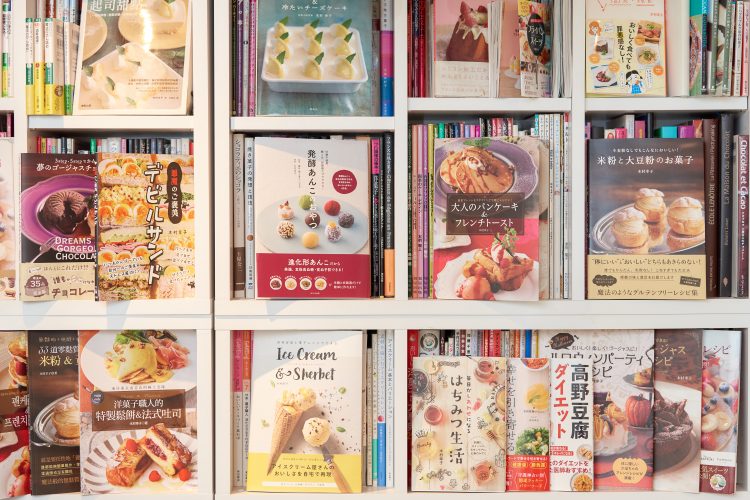
Kimura’s atelier is filled with publications and books on cooking that she had a part in
Kimura is currently working on a second book on fermented anko due to come out in September 2020. The next book will contain recipes for side dishes and snacks using fermented anko made with vegetables instead of beans.
“I plan to make recipes useable for meals that substitute fermented anko for sugar. Fermented anko goes well with food not only because it is naturally sweet but also because the fermentation boosts the umami flavor. I hope this book will make people more familiar with fermented anko and use it as another type of regular seasoning.”
Food photographs © Yamamoto Hiroko

A cook and confectionery researcher, Kimura runs the popular confectionery school Trois-soeurs in Aoyama, Tokyo. She develops and supervises healthy confectionery and cooking recipes that use fermented ingredients, gluten-free ingredients, low sugar, and honey. She is currently working hard on the second edition of Fermented Anko Snacks (Wave Publishing).